I’m not a rangefinder person, or shall I say I’m not a 35mm rangefinder person. But I will make an exception for a well-designed and made medium format kit. Meet the New Mamiya 6. While it was built during the age of premium medium format cameras and premium 35mm compacts, the New 6 is a camera that takes a lot from the historic camera that launched Mamiya as a company back in the 1940s. But takes things into the modern age with a light meter, electronics, interchangeable lenses and modern materials. This is a medium-format camera that I could see myself using if it didn’t have a high price tag. Thanks to Rob Roy for loaning this beauty out for review.
Camera Specifications
Make: Mamiya
Model: New Mamiya 6
Type: Rangefinder
Format: Medium Format (120/220), 6×6
Lens: Interchangeable,
Shutter: #00 Electronic Leaf Shutter, 4″ – 1/500″ + Bulb
Meter: SPD Cell, EV 3.5 ~ EV 18 @ ASA-100, ASA-25 – ASA-1600
Dimensions (WxHxD): 155mm x 109mm x 69mm
Weight: 809g (w/o batteries or lens)
Power Source: 2x LR44 Batteries
Year of Manufacture: 1989-1995
Background
As a camera maker, Mamiya is among the youngest from Japan. Founded in May 1940, they released their first camera within a year. The Mamyia-Six, on the surface, looked like any other folding medium format camera. But the Mamyia-Six was a little more than that; it included a coupled rangefinder that focused by moving the film plane rather than the bellows or a lens mounted helical. The rangefinder was found in the eye-level finder, but photographers could also use a waist-level finder. From 1940 to 1943, Mamiya released five versions of the Mamiya-Six, Models I, Ia, II, IIa, and III. What also set the Mamiya-Six apart is that Mamiya allowed the customer to bring their choice of lens and shutter to be mounted on the camera. As a result, there are nearly infinite combinations of lenses and shutters out there. The most common lens is the K.O.L. Sola Special, a four-element uncoated 75mm f/3.5 lens. But you could also find Zuiko, Nikkor, Anastigmats and Triplet lenses from various lens makers from Japan. Production continued throughout the war, but as the war continued and materials became scarce, the quality dropped, notably with late war Model IIIs that suffered from thin chrome. Mamiya also lost its entire production factory as the American bombing raids targeted the Japanese home islands. During the American occupation, Mamiya would be allowed to restart production. But there was a catch, they could only sell to the foreign market and hit a certain quota before domestic sales could restart. After acquiring a lens factory to produce the lenses for their cameras, the Mamiya-6 IV hit the market in 1948. While the camera followed the same foundation as the war-time models, it lacked the waist-level finder. Initial versions of the IV came with Mamiya-built (Mamiya-Sekor) optics, but in the 1950s, Olympus Zuiko lenses became an optional addition. The IV proved popular that by the 1950s, Mamiya began to release a series of rapid-fire models. Starting in 1953, the Mamiya-6 V allowed shooting 6×6 and 6×4.5 negative sizes. The Mamiya-6 K removed the automatic frame spacing, replacing it with a red window as a budget option. The Mamiya-6 Automat added the ability to cock the shutter when winding the film. The Mamiya-6 IVb and K2 were updated to a more squared-off body style, replacing the eye-level finder with a square rather than a rounded window. Another body style update came with the Mamyia-6 IVs and Mamiya-6 P. The final model came in 1958 with the Mamiya-6 Automat II, which provided the latest body style. But it would be in production for only a year when, in 1959, the production of all Mamiya-6 cameras shut down. While Mamiya continued to improve its optics and camera models, it was another three decades before the branding returned to the forefront. At 1986’s Photokina, the New Mamiya-6 was introduced and hit store shelves in 1989. The New-6 took the core of the original folding rangefinder from the mid-century but updated it for the late century. New build material, light meter, interchangeable lenses, but remained a 6×6 rangefinder that could accept both 120 and 220 films. Mamiya made a small revision shortly after the release to clear up some functionality issues, replacing symbols with text for semi-automatic exposure and exposure lock. In 1993 the New Mamiya-6 MF added back the ability to shoot both 6×6 and 6×4.5 formats, allowed 35mm film to be loaded, and produced a 24x54mm panorama. Production of both the New-6 and New-6 MF continued until 1995, when the Mamiya 7 replaced the New-6 and followed the same basic layout but shot in the 6×7 format rather than 6×6, making it slightly more useful, especially for print work.


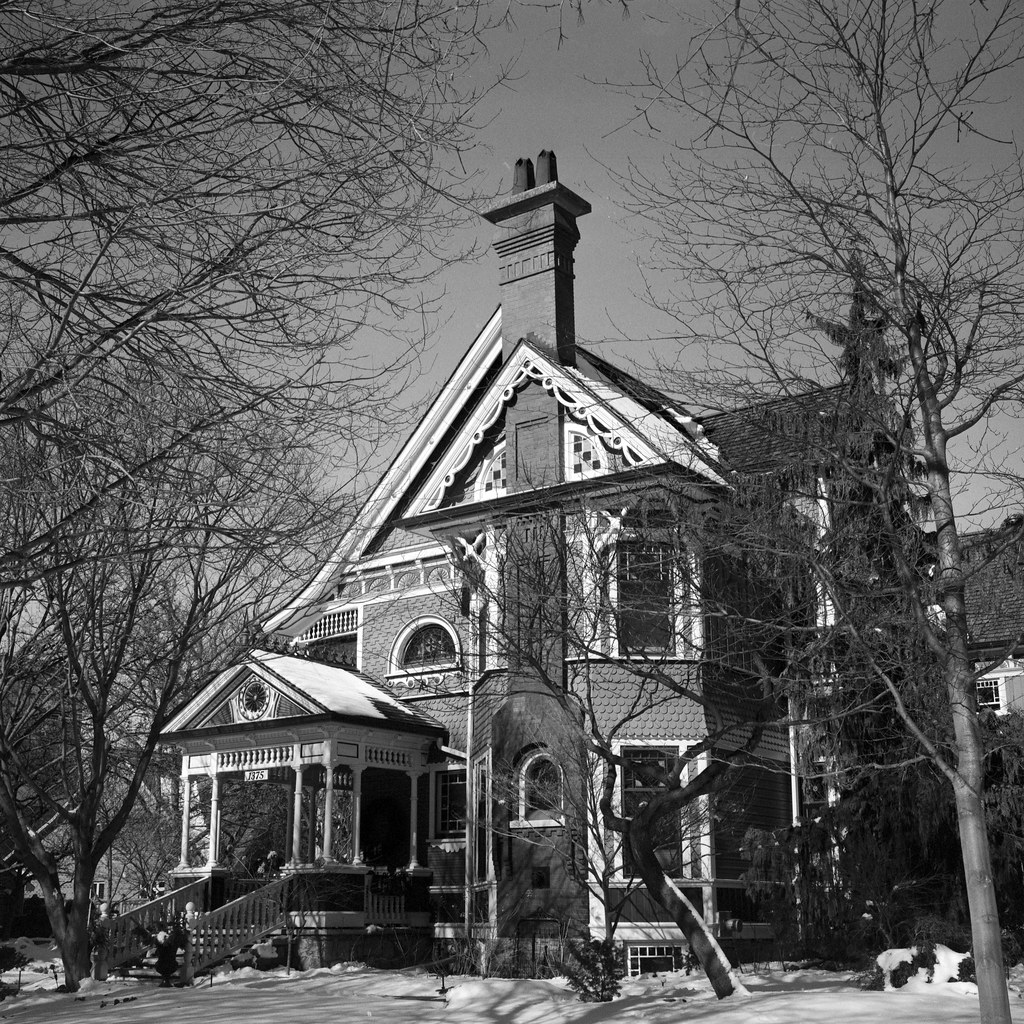
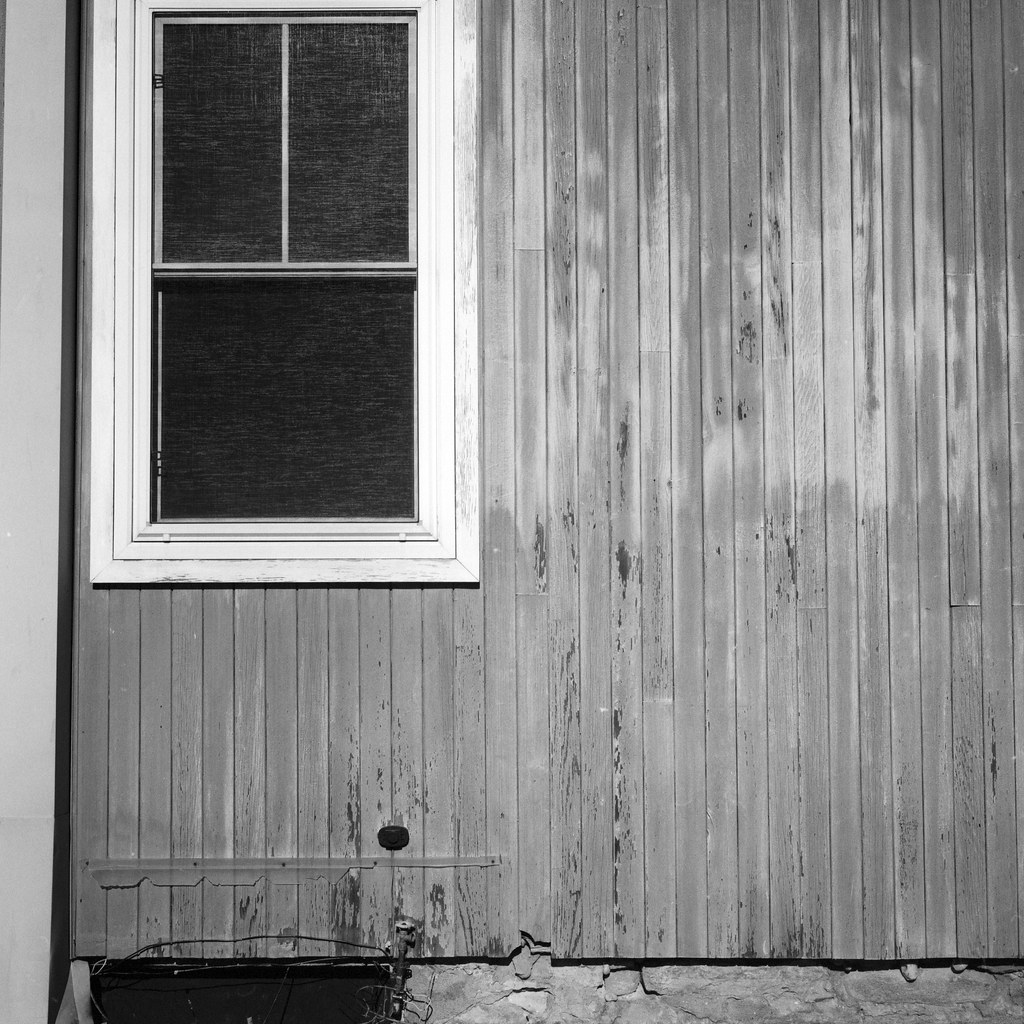
Impressions
What is most striking about the New-6 is that it incorporates the modern elements from the late 20th Century and premium medium format cameras that would come in the 1990s while maintaining its historical foundations from the folding rangefinders it grew out of from the war and post-war eras. In the closed or ‘folded’ configuration, the New-6 is surprisingly compact; the hybrid construction provides a lightweight camera despite its size. YOu can easily carry the camera with the 75mm lens mounted and keep both the 50mm and 150mm lenses in your camera bag without too much weight, with plenty of room left for the film. Despite being from this era, the New-6 does not suffer from the rubberised coating getting that sticky residue and the grip on the side is well made and has a nice moulded grip that reminds me of my Maxxum 9. Controls are well laid out and rather simple, although this is the first version in the copy I am reviewing, so the settings are in icon rather than letter form. The on/off switch is a bit small but is easily worked. The shutter speed/mode dial is big and has a nice click as you turn it, and it lifts and moves freely to adjust your film speed. With two security locks to prevent accidentally adjusting the EV compensation dial or moving it out of AE mode. But they aren’t too far distance and different enough that you cannot mess up one for the other. The lens mount must be pulled out into the open position for the camera to work and focus correctly; a button will release the lock, and a smaller button to unlock and dismount the lens. The darkslide switches with a safety catch on the bottom of the camera to release to the open position. There are a couple of other excellent additions, including a hot shoe, a mechanical shutter release socket, and a standard tripod socket. The viewfinder is also big and bright with a matching rangefinder patch. It has variable frame lines that update based on the mounted lens to help reduce parallax error. Overall, the New-6 is a well-built camera for its age; while I wouldn’t drop the thing (it costs way too much), it is a sturdy camera that could take much punishment before breaking.


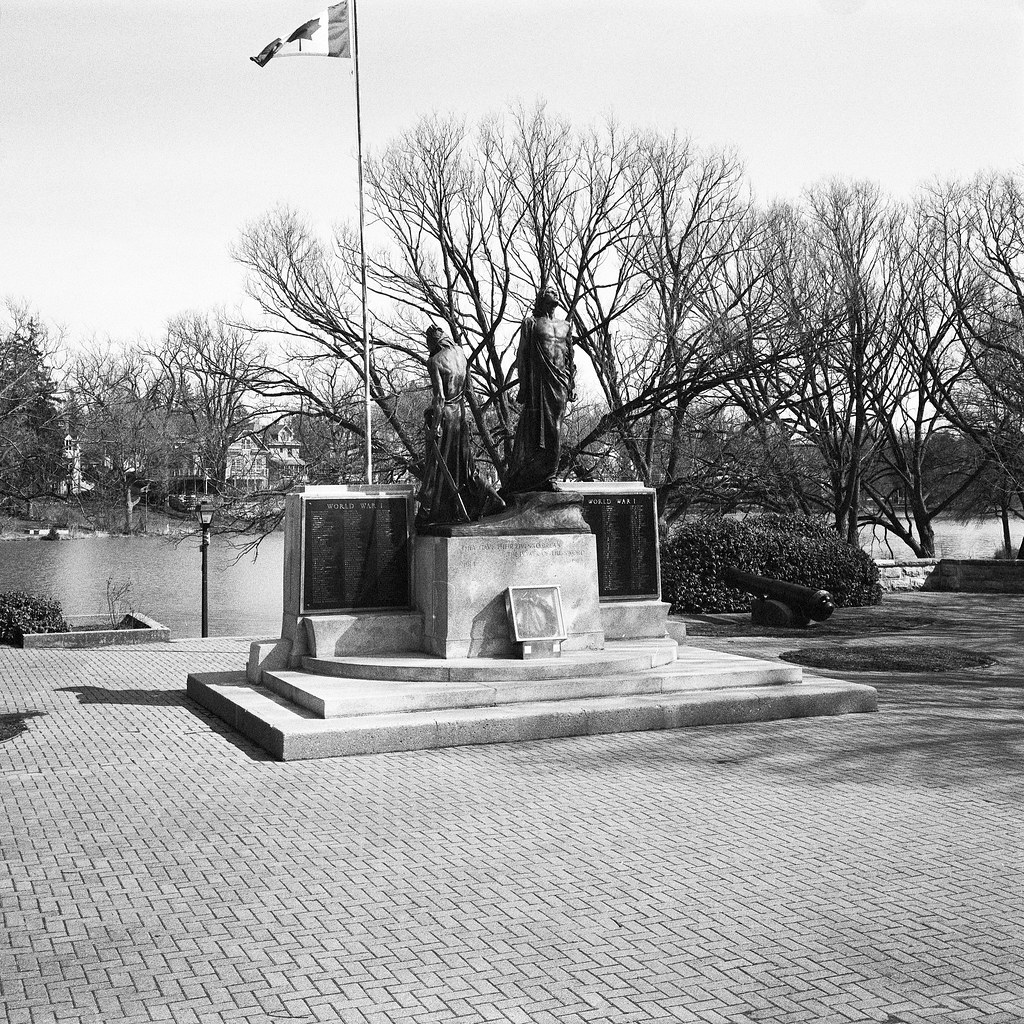

Experiences
The New-6 presents the photographer with an amazing experience. And that’s coming from someone who does not like rangefinders. Despite being a larger camera, it is easy to hold and comfortable. The construction is solid enough but doesn’t add much weight to your kit. You will want a good camera strap, but it won’t be too hard on the back when carrying this around for a whole day. If you’ve worked with similar premium medium format cameras from the 1980s and 1990s, the New-6 has a familiar look and feel. Loading the film can be tricky; thankfully, two spring-loaded bottom posts allow you to move the spent spool to the takeup spot and load the fresh film. Once loading, you must pull the leading paper across and ensure the start arrow is aligned with the middle of the image frame. It can be hard to miss, but there are two chrome arrows at the approximate middle spot on the top and bottom of the square. Then close up the back and advance until it stops at the first frame. Now you have to adjust the pressure plate to load 220 films, but with 220 films becoming more scarce, it might be best to stick with 120 films. Pulling out the lens mount to ensure that everything is at the right focal length and the rangefinder focusing works is also important. If you want to swap out the lens, make sure the darkslide is closed, there’s a switch on the bottom, and turn clockwise to close. Then use the small chrome release to dismount the lens. Then once the new lens is mounted, hit the release switch to open the darkslide. If the darkslide is closed, a red LED warns you in the viewfinder. The viewfinder is big and bright, with an equally big rangefinder patch with plenty of contrast. So focusing is a breeze, but so is composition. There are adjustable frame lines that automatically adjust based on the lens you have mounted. The 150mm frame lines are comically small, but it helps. The one problem with the viewfinder is that the shutter speeds are out of my visual range; I blame this mainly on wearing glasses. Having an original revision model for this review, the aperture priority mode is indicated by a circle on the shutter speed dial and the auto-exposure lock by a square. Using other Mamyia cameras in the past isn’t an issue, but reading the manual first is a good idea if you are unfamiliar. And the metering is superb, both in manual and aperture priority mode; despite not being a fancy centre-weighted or matrix meter, I never had an issue with exposure. The shutter is a little too quiet for my tastes, and the shutter releases a bit of a hair trigger, but good trigger discipline means I don’t waste a shot. And despite being a big 6×6 negative, the film advance is not too long of a pull, as in rather smooth.
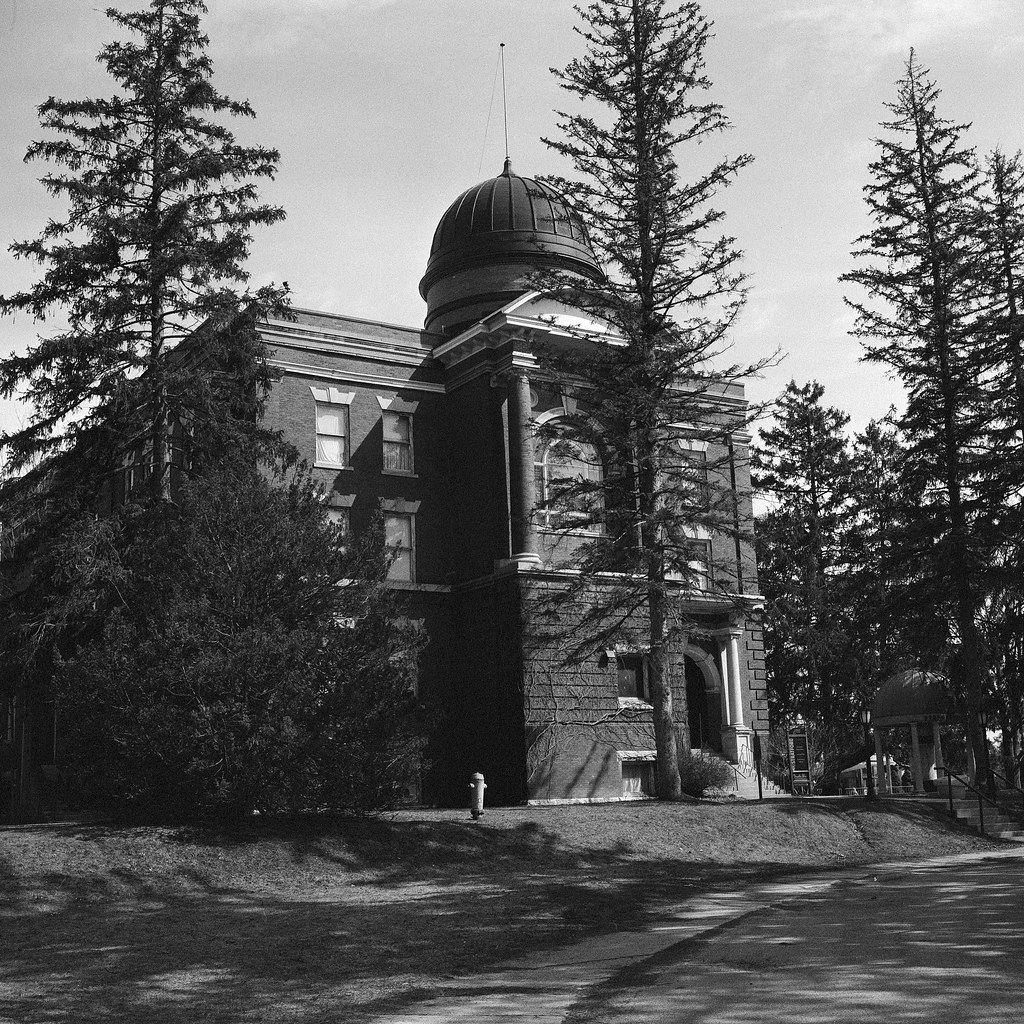


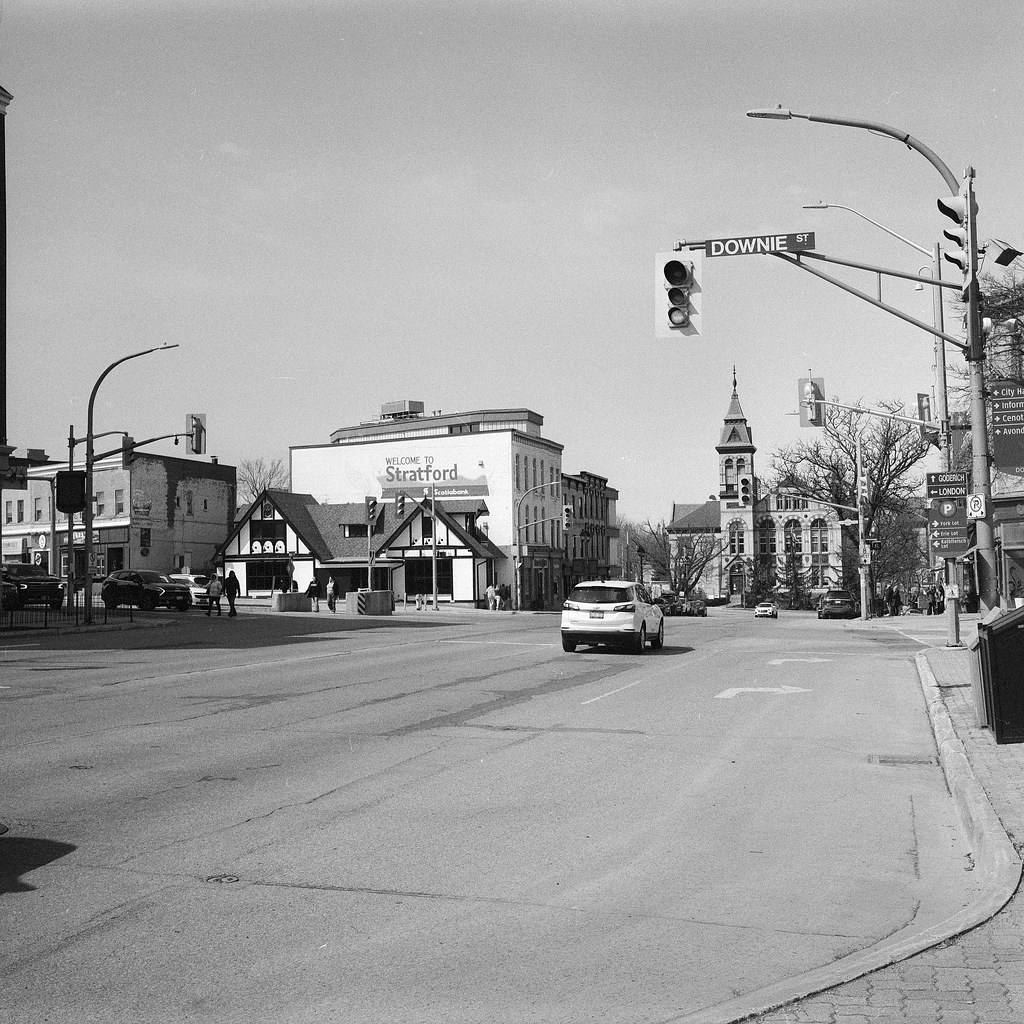
Optics
If you’re familiar with Mamiya optics, you’ll love the lenses for the New-6! You get that same hyper-real, sharp, and contrasty glass you’re familiar with but in a smaller set of lenses with an excellent coating. And that is the power of the New-6: you get interchangeable lenses. The downside is that Mamiya only released three lenses for the camera, but it is the perfect three-lens kit. The standard lens is the 75mm f/3.5; it’s a beautiful low-profile piece of glass and will handle most of your work. There is a wide-angle option, the classic 50mm f/4 for wide-angle work is the one lens I did not get to test during this review, but I’ve heard that it can even beat out the Zeiss Distagon on the Hasselblad V-System in some tests. And there is a portrait lens, the 150mm f/4.5, while up to the same standards as the other two lenses, it is a bit bulky to carry around and use, while both the 75mm and the 50mm are low profile and fit the overall feel of the camera. While the viewfinder doesn’t change when the lenses are mounted, the frame lines automatically update. The 50mm is almost the whole finder, the 75mm is about 80% of the finder, and the 150mm is slightly larger than the rangefinder patch. The lines help with composition and do a good job of preventing parallax errors. If you are looking at a kit, try and find one with all three lenses, and you’ll be ready to go. 75mm or 50mm is your best bet for a single lens, depending on how you intend to use the camera. And those two lenses also make for a good two-lens kit for the New-6.
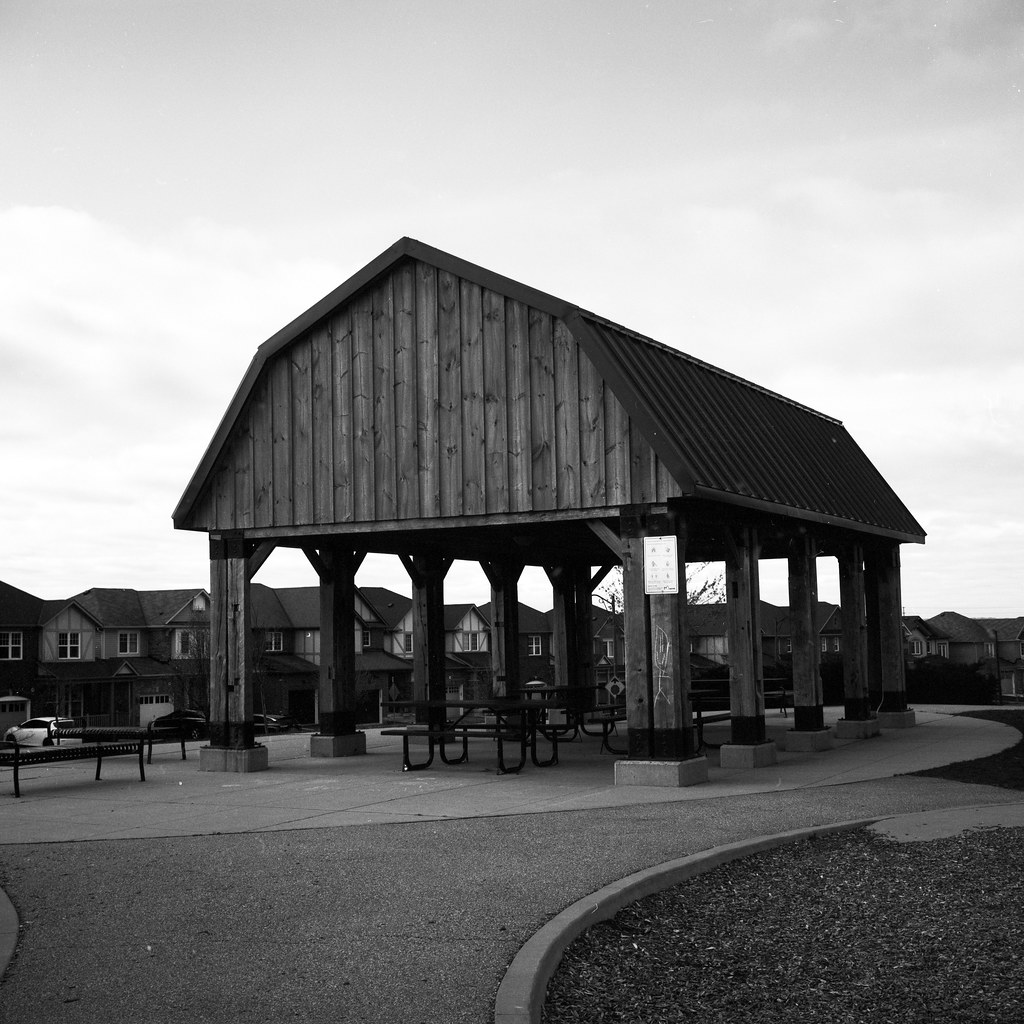


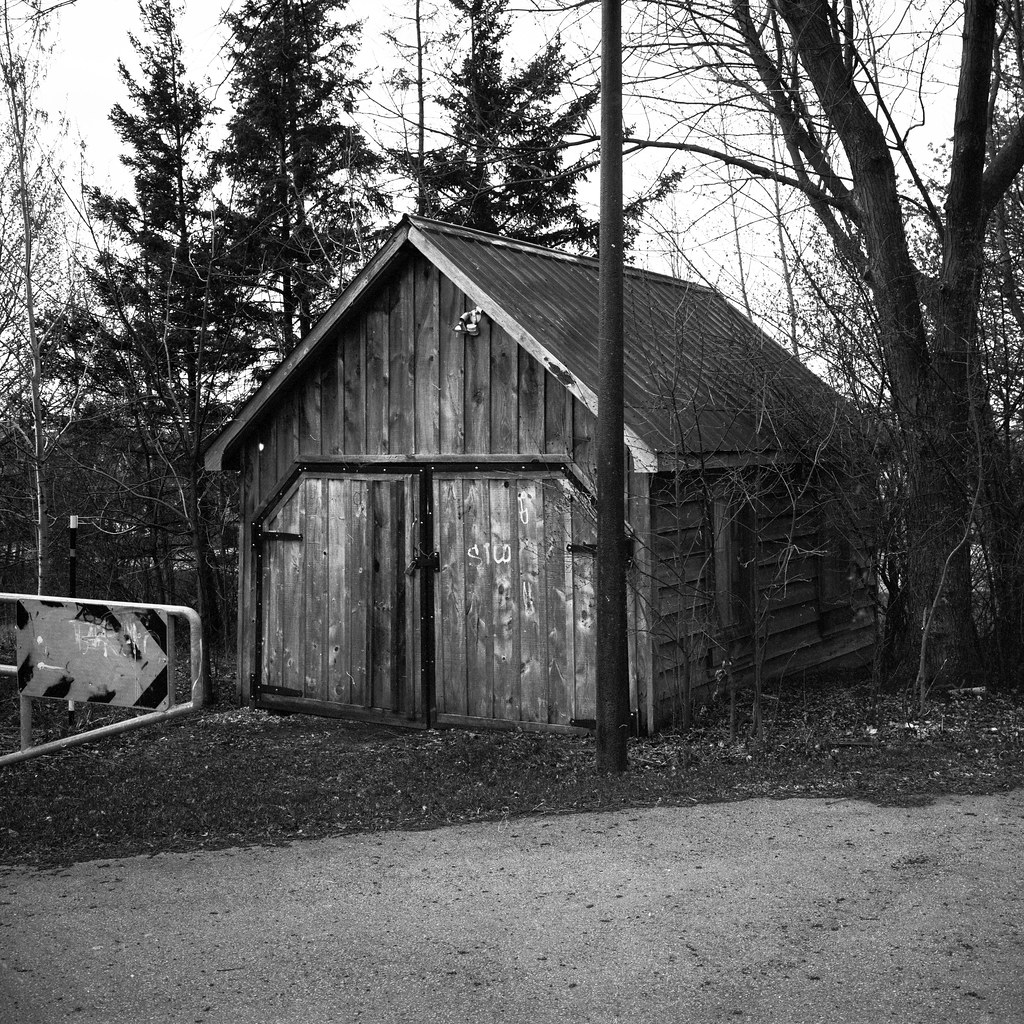
Lowdown
The New-6 is a dangerous camera for me; it is everything I look for in a good travel camera. It’s compact, has a good three-lens kit, and has a meter with semi-automatic aperture priority metering. The optics are superb, and the camera is no-nonsense. It does what you need it to do and doesn’t make you think too hard. The biggest issue is that it produces 6×6 negatives, composition in the square can be tricky, and it doesn’t always suit the printing process. Yes, you can crop to a rectangle in post-production, but it is that extra step, and you have to decide what to crop out if you didn’t when you were shooting. But the cost is the biggest thing that will keep the New-6 out of my tool kit. This is an expensive camera, and while deals can be had, you will pay a great deal for this camera. The best is to look for a camera with at least one lens, 75mm or 50mm. Then purchase one or the other. A three-lens kit with a camera will run about 5200$ shipped from Japan, while the camera body alone runs around 1100$, and add a lens; you’re up to 2000$ at least. The lenses fetch good prices, also running around 500-1000$, but on the plus side, only three lenses were made for the camera. The best part is that despite their age, you can still get these cameras repaired, electronics wise they aren’t too complex and still have a great deal of mechanical functionality. So maybe one day I’ll get to own one of these, but for now, I’m happy to have at least used it a few times.
Further Reading
Don’t just take my word on the New Mamiya 6; you can check out the reviews by other awesome camera reviewers!
Casual Photophile – On the Road with the Mamiya 6
Ken Rockwell – Mamiya 6
Peter Jeffery – Mamiya 6 Review
Mr. Leica – Mamiya 6 Review


Having used the Fuji GL-690 as my medium format rangefinder for a while now, I can likely say if I could pony up the cash for a Mamiya 6 (or better 7) I probably would.
It’s a gorgeous bit of kit and the lenses are beautiful.
Great review as always Alex.
Cheers from London!
Thank you! And yes it is a great piece of kit! I do want to try a 7 one day!
Wonderful review Alex! The only thing that went wrong with my M6 was the film advance mechanism. Fortunately KEH accepted the return and forwarded me another copy of the camera. FWIW I recommend advancing the lever ‘slow and steady’ not the usual ‘fast thumb’ advance technique.